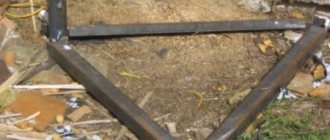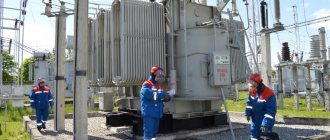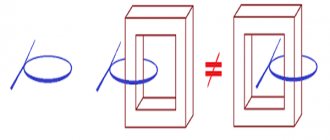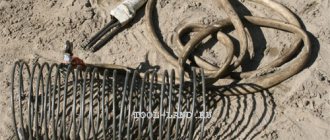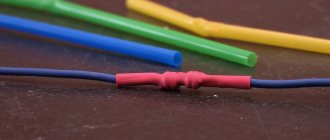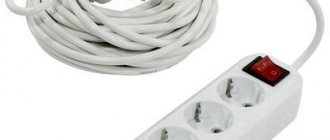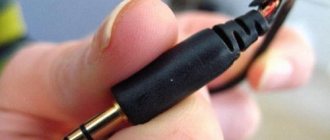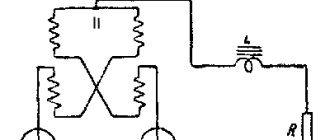Winding wire is a general collective term used to refer to electrical products. Like other types of such products, its main purpose is to ensure a safe connection between an electrical source and an electrical circuit or consuming device. There are many types of electrical wires, which is easily explained by the variability in electricity use. The use of this type of cable products is in the winding of coils of energy generators, transformers and special devices.
What it is
In modern reality it is impossible to do without electricity. It reaches the consumer from a source that transmits or generates it. Multidisciplinary use naturally includes many types that provide functionality. Therefore, the variety of cable products amazes the imagination of an amateur. There are output and connecting wires, automobile and aviation wires, communication wires and those designed for installing overhead lines. What they have in common is the name (wire) and the letter P in the marking, indicating that the electrical product belongs to a certain category of wires.
Winding material spools
The two most common categories are winding and installation wire. As one would expect from the name, winding types are used for winding: in coils, transformers, electric motors and electric generators, electromagnets, armatures of commutator machines, devices, devices. This is a specific number of turns of wire used to create an electrical circuit. The dimensions, purpose, and place of application of the devices are varied. Hence the huge number of types of winding wires, their variability, and the impossibility of differentiating an electrical product based on one characteristic.
An approximate classification can be made according to the following features:
- the number of current-carrying cores (from one to several, usually called multi-core, with a number of more than three);
- the material used to manufacture the cores for conducting current - made of copper, aluminum or combined alloys (nichrome, made of nickel and chromium);
- cross-section geometry - the wire in cross-section can be round or rectangular;
- insulation material - fibrous, enamel, combined, usually consisting of several layers of insulating coating of different types).
Note! All features of the material, its characteristics, are reflected in the marking. Technical information indicates the type of product (P - wire), the first letter of the abbreviation, copper or aluminum made of an alloy, the wire is indicated at the end of a series of letters (A - aluminum, NX - nichrome). There is a whole list of abbreviations indicating the material used to make the insulating layer.
You may be interested in Description of the PVS cable
Aluminum winding wire
Copper wire for rewinding is used more often than others. The prevalence of aluminum, which is cheaper, is hampered by its resistivity, which is noticeably higher than the similar properties of copper. Combined alloys are used for special needs created by the specific complexity of devices and the functions they perform.
Characteristic differences between copper and aluminum
| Parameter | Aluminum | Copper |
| Temperature coefficient of linear expansion, x10-6/°С | 21-23 | 16,4-16,6 |
| Thermal conductivity, W/m∙°С | 218 | 406 |
| Specific resistance, Ohm∙mm2/m | 0,026-0,028 | 0,017-0,018 |
| Tensile strength, N/mm2 (soft grades) | 79-108 | 197-276 |
Expansion coefficient
When aluminum heats up, it expands 30% more than copper. If aluminum lugs are connected using a bolt and nut, be sure to place a spring washer under the clamping nut. In this case, the contact connection will not weaken while the voltage is turned off and the tips cool down, thereby reducing their size.
Conclusion: To ensure that the quality of the connection of aluminum cables is not inferior to the quality of copper contacts, it is necessary to use the proper fittings.
Thermal conductivity
Copper conducts heat much better than aluminum. Therefore, if different metals of windings in transformers have the same cross-section, then a product made of copper is cooled much better than one made of aluminum. To achieve the same electrical conductivity, and therefore the same heat transfer, the aluminum wire in the converter must have a cross-section that is 60% larger than the copper wire.
Designers, when developing a package of documents for the production of transformers, take into account the characteristics of the material, design, as well as the total area of the cooling surface of the winding.
Conclusion: All transformers, regardless of what metal their windings are made of, have very similar thermal characteristics .
Electrical conductivity
Due to the fact that aluminum has an electrical conductivity 60% less than copper, aluminum windings have higher losses. Developers of converters with aluminum windings include conductor cross-sections in the design documentation that exceed the values for similar copper products. This equalizes the energy loss in products that have different materials in the windings.
At the same time, manufacturers have certain limits that limit the choice of wire cross-section. Therefore, sometimes it turns out that the copper winding in a transformer has more significant losses than a similar aluminum product. This is due to the fact that manufacturers, for one reason or another, used copper wire as a winding, the cross-section of which does not correspond to the design standard.
As for dry transformers, regardless of the metal of the winding, the losses in the core made of metal plates remain unchanged. It is possible to achieve higher efficiency of the converter only by changing the cross-section of the winding wire. This is the main criterion that indicates a higher degree of effectiveness of a particular device.
Conclusion: Due to the fact that aluminum wire is much cheaper, it can be used to wind a winding with a larger cross-section for the same money. This will lead to a significant reduction in energy losses during converter operation. In some cases, such windings are much more efficient than copper windings.
Tensile strength of metals
Aluminum requires 40% less force to break than copper. For manufacturers of electrical products, this fact causes some concern, since most of the products they produce are often subject to cyclic loads. This is due to the large inrush currents that occur when starting some electrical power devices. The powerful electromagnetic forces arising from such currents cause increased movement of molecules in conductors, which leads to displacement of the windings in products.
A comparative analysis of the technical indicators of various conductors is done based on their cross-sectional area. Based on the analysis data, the same electrical conductivity in transformers with different windings is ensured as follows. In products with aluminum winding, the cross-sectional area of the wire should be 60% larger than in a similar device with a copper winding. In this case, the technical indicators of products made from different materials will be approximately the same.
Conclusion: The transformer cannot suffer mechanical damage due to a sudden change in load, since the cross-section of the winding is selected in such a way that there is a necessary safety margin. Damage can only occur due to unreliable fastening at the connection points of the wires.
External transformer connections
Currently, the use of copper in transformer windings is driven by the desire to produce higher quality and more reliable transforming devices. It is known that both aluminum and copper are easily susceptible to environmental damage. Because of this, corrosion, oxidation and other chemical changes occur in metals.
The surface of an aluminum wire coated with oxide becomes an insulator and does not allow electric current to pass through. Because of this, timely cleaning of aluminum contacts is of great importance and must be carried out regularly, in strict accordance with the maintenance schedule.
Oxidized copper loses its electrical conductivity much less, since the sulfides and oxides that appear on it, of course, are not to the extent we would like, but still have some electrical conductivity. The personnel who service transformer substations know all this well. Therefore, a specially trained team of electricians regularly performs routine checks of bolted connections of working equipment.
In addition, there is the problem of connecting the aluminum windings of the converter to the copper wires of the external electrical network. Aluminum and copper lugs cannot be connected directly with bolts. The fact is that metals have different electrical conductivities, which is why the joints constantly overheat and the connected surfaces are destroyed. Welding technologies developed specifically for this purpose turned out to be ineffective, so they are not used for welding cables made of different metals.
To connect copper and aluminum cables, tinned lugs coated with a thin layer of tin or silver are now used. When connecting aluminum windings of transformers with copper network cables, the terminals are coated with tin. Silver is used in electronics, where higher quality joints are required. The practice of such connections is generally accepted. The reliability of the connections is confirmed by the long periods of uninterrupted operation of the equipment.
Various wires are also often connected using special metal terminals. This terminal is made in the form of a rectangular frame into which two connected conductors are inserted. There are threaded holes on one surface of the terminal. After the conductors are inserted into the frame, they are fixed with screws that are screwed into the thread.
Internal connection of transformer windings
The connection of the copper windings of the converters is carried out by soldering. The refractory solder used in this case slightly reduces the electrical conductivity of the soldered area. In this area, copper oxide is constantly released, due to which the outer layer peels off, which leads to damage to the entire conductor. This is a significant disadvantage of this connection method.
In aluminum connections, the method of welding wires using an inert gas is used. In them, aluminum oxide forms a durable protective coating that protects contact from the negative effects of the environment. In addition, this method of connecting conductors has the great advantage that there is no loss of electrical conductivity in the welded areas during operation of the device.
The operating time of transformers is to a certain extent related to the conditions in which they operate. This includes negative environmental influences, extreme loads and other unfavorable conditions. However, people using electricity should not worry about this. As practice has shown, converters with different windings can operate for many years without any problems.
Why is it needed?
The scope of application of the cable is the creation of turns of an electrical circuit for the summation of electromotive forces. Depending on the device, the winding can be simple or complex, consisting of many sections and layers. which are separated by insulation. Hence the numerous types of winding wires and the wide scope of their everyday use:
- electric generators and electric motors, with three-phase, single-phase, short-circuited, armature or excitation windings;
- electromagnets, inductors;
- transformers, divided into primary and secondary, as well as auxiliary - for supplying and discharging energy, power compensation.
Winding a toroidal transformer
Additional information! The simplest example of such a device is a coil. However, even if we do not take into account the field and short-circuit windings used in asynchronous motors, there are much more complex circuits. These include, for example, the end one, for recording which diagrams are used, or the unfolded one, with a cylinder of the plane of rotation.
How to reel correctly
Having received most of the technical data, determined the exact purpose and scope of use of the future device, elements of the transformer coil windings, and received factory templates for the selected type of winding, we begin the practical implementation of winding processes.
Here, experience in performing such work, the availability of tools for such work, as well as patience will play a big role.
It is required to use a mandatory algorithm of actions in this format of work and prepare for several failures in advance if there has been no previous experience in winding turns of a transformer coil. Currently, there are quite a lot of both electronic and paper training sources on all the rules for winding a transformer winding so that a beginner can become a professional after some time in this work.
Characteristics
Enameled or enamel-insulated wire can be filled with aluminum, copper or nickel-plated copper. Usually these are electrical products that are resistant to heat, the coating of which is made using electrical insulating varnishes. Special polymer compounds dissolve in easily evaporating organic compounds. When heated, the solvent evaporates, which gives high-strength enameling - the formation of a stable and hard film on the wire. Viniflex, metalvin, polyetherimide varnishes, drying natural oils, and synthetic resins can be used in the manufacture of enamel wire. Double-layer insulation is made by applying two layers of varnish.
Double-layer insulated winding wire
The characteristics of winding wires with enamel insulation can be determined by the filling and cross-sectional shape (round or rectangular), outer diameter, and ability to withstand mechanical load. Aluminum wires are tested for breakdown voltage, and copper wires are tested for elasticity, resistance to insulation abrasion and the maximum number of microdefects.
Structure
It is diverse, since many varieties fall under the category of electrical products used for winding:
- standard and simple consists of a conductive core and an insulating layer (the material for making the wire, like the raw materials for insulation, can be variable);
- bare wire is made without insulation;
- stranded is made of several wires twisted together;
- stranded consists of several conductive wires, but each of them is isolated from its neighbors, and then from the totality of its components.
You might be interested in Description of the VVGng-LS cable
Important! Its intended purpose and scope of application depend on the structure of the winding material. Working with each variety has its own specific difficulties. In order to wrap the device being manufactured and connect the individual elements together, you need to have certain knowledge about the type of energy used in the equipment and how to isolate the connection points to comply with safety regulations.
General idea of wire structure
Purpose of the wire
Unlike mounting and installation products, the winding product is used only for certain purposes. Moreover, each category is used depending on the technical characteristics - the material of the conductors, the type of insulation used, physical and mechanical characteristics and heat resistance. Types of wire depending on its purpose:
- PEL - copper, insulated with oil varnishes, used in electrical appliances - for the manufacture of frames and coils;
- in radio engineering and industrial instrument making, products with an enamel coating and high resistance to external aggressiveness and electrical insulating properties are often needed;
- wires with fiber or combined insulation are intended for electric motors and other devices in which there is a possibility of excessive mechanical stress, but the thickness of the insulating layer does not matter.
The need to independently rewind a certain part in a device means for a repairman or radio amateur a careful selection of the necessary material according to the manufacturer’s markings and technical regulations.
Types of winding wire
Marking
Different designs of conductor geometry, the use of various types of wire insulation for transformer windings, and other electrical properties in the “PUE” have led to the creation of regulated abbreviations for their markings.
The first letter symbol in such an abbreviation indicates the conductor material itself: “A” - makes it clear that the winding wire is aluminum. Another symbol denotes nichrome, and its absence is considered to indicate that the conductor is made of copper.
The second explains that this is the wire itself for the winding, and the subsequent ones indicate what type and material of dielectric its insulation belongs to.
The marking also uses numeric symbols after alphabetic ones. They usually indicate the cross-section of the conductor, as well as the maximum permissible insulation voltage for which the wire is designed. In other cases, the numbers may refer to the number of layers of insulation. Examples of transformer winding wires:
- PEM-1 – copper wire with enameled insulation in one layer;
- PKR-1 – copper wire with nylon insulation in one strand.
It is almost impossible to remember all the markings of the conductors for the windings. The main thing is to know the principle of compiling these markings and to have the ability to use reference literature for its correct selection.
How to use winding wire correctly
Electrical installation work in modeling, radio electronics and even robotics, as well as in repair work to restore devices of various types, involves the use of variable methods to ensure safety. A repairman or radio amateur can use various techniques - soldering and terminal crimping, sleeve crimping and even bolting.
Working with the winding wire is carried out with special devices:
- To remove a conventional type of dielectric, a sharp cutting tool is used;
- There are different types of enamel coating, some of which do not require removal of the insulating layer: it melts during soldering;
- to cut and transform live wires and carry them to the soldering iron, you will need manipulators (nippers or tweezers);
- solder heating devices are needed - local or local - soldering irons, crucibles, furnaces in industrial conditions to wire large cross-sections or volumetric parts.
The correct implementation of repair or winding work is determined by several circumstances - the type of device, cross-sectional diagram, number of turns of the winding. Fluxes or solders must be selected according to several characteristics and correspond to the marking of the wire. Copper, aluminum and composite strands may require different solders. Not only the chemical composition and refractoriness matter, but also the electrical properties.
You may be interested in this Features of the heating cable
How to choose the right one
Without delving into the details of manufacturing such windings for high-frequency converters, the manufacturing method will seem quite simple to anyone. However, in practice, radio amateurs, or even experienced electronics engineers, have at least two difficulties in correctly and efficiently producing such a Litz wire - stripping the ends of the conductor and creating it in the form of a bundle of many insulated stranded wires.
A frivolous attitude towards such a project to create high-frequency windings will lead to mistakes and wasteful material costs. Requires the use of advance selection tools.
According to reference books and catalogs
Using the necessary technical literature on electrical engineering, which provides detailed descriptions of the choice of conductors for the windings of high-frequency equipment, as well as ready-made tabular reference materials have been published, it is worth comparing their data with the current project for all technical parameters and choosing the one you need. This will allow you to avoid unnecessary mistakes and financial calculations.
Calculation methods
The thickness of the insulation, the number of cores in the bundle, the resistance of the core and dielectric do not allow us to freely buy such Litz wire ready-made or in the form of kit tools on the Russian market at the present time.
Here it is worth either using monitoring of the foreign electrical market to make far-expensive purchases (due to payments in foreign currency) of such options for winding the windings of high-frequency converters, or, armed with measuring equipment, reference and technical literature, having measured the necessary parameters, calculate the required brand using automated services , in which, by substituting the required output values, the desired result is obtained, or by studying manual calculation formulas, do it the old fashioned way.
The basis of the technique comes down to the selection of stranded conductors according to resistivity, length, and their cross-section as close as possible to the reference rating.
Manual measurements
Manually obtaining such parameters will allow you to obtain a high-quality multimeter, details of the equipment project that needs to be created, and technical literature that will guide you in the correct selection of experimental conductor grades.
Using equipment, it is possible to measure the resistivity of a physically selected wire for winding. Having this value, calculate its cross-section by comparing it with the reference value and determining the required thickness of the bundle.
The process is very labor-intensive, but with additional support in reference books and any other possible information on the selection of such wires, it is quite possible to implement.
Storage conditions
Reels and drums are wrapped in special paper and placed in boxes. Storage of coiled wire is optimal if the coil is wrapped in burlap, matting, and other materials that ensure safety. The best option, generally accepted in civilized warehouses, is a dry warehouse with a certain temperature, independent of external influences.
Storing the winding wire
Winding wire table
| View | Conductor material | Insulation |
| Simple | aluminum, copper, combined alloys | fibrous or without it |
| enamel OP | aluminum copper, combined alloys | enamel |
| complex, for specific needs | combined alloys, aluminum copper, | combined |
There are special tables obtained by experimental studies for OPs with an enamel coating, where the material of manufacture is copper, aluminum or alloys. The number of products in the electrical industry is extensive, but it is easy to look up the technical parameters in specialized literature if you know the labeling of the product used for winding.
